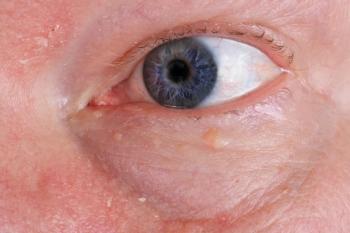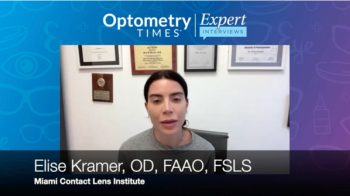
Explore the mechanism of macular hole formation
A 56 year-old black female attended to clinic for a 6-month follow-up of macular hole (MH) OD with mild vitreous traction at the macula OS. Aside from the MH and minimal refractive correction, the ocular history is unremarkable. She has been systemically treated for hypertension and diabetes for 20 years. Examination revealed best-corrected visual acuity of 10/400 OD and 20/25 OS. At that time, an OCT baseline was performed. The figures show baseline fundus photographs taken 3 months earlier (See Figure 1).
A 56 year-old black female attended to clinic for a 6-month follow-up of macular hole (MH) OD with mild vitreous traction at the macula OS. Aside from the MH and minimal refractive correction, the ocular history is unremarkable. She has been systemically treated for hypertension and diabetes for 20 years. Examination revealed best-corrected visual acuity of 10/400 OD and 20/25 OS. At that time, an OCT baseline was performed. The figures show baseline fundus photographs taken 3 months earlier (See Figure 1).
Considering Figure 1 and looking at the OS, there is vitreomacular adherence (VMA) that is very apparent on OCT. Much of what has been learned about the vitreomacular interface has been the convergence of histologic, clinical, and imaging information. It has been recognized for more than 3 decades that residual VMA following posterior vitreous detachment is the cause of MH formation. Looking at the OCT studies of the patient’s OD, this becomes apparent (Figure 2).
The OS showed only VMA in the OD on OCT (Figure 3).
Procedure recommended
At a further follow-up visit approximately 3 months later, a retinal consultation was obtained. At this time, surgery to relieve the vitreomacular traction (VMT) OD was recommended, and the patient accepted. Following vitrectomy and release of VMT, the patient was seen and imaged. In addition to the vitrectomy procedure, a cataract extraction with placement of a posterior-chamber IOL was performed. The post-operative macular image showed the fovea and macula resumed appropriate anatomical contour. Looking closely, the photoreceptor layer is absent, which resulted in no improvement in visual acuity (Figure 4). High-definition scans show this clearly (Figure 5). The obscuration in the upper portion of the reflectance image is the gas bubble placed to facilitate MH closure.
The high-definition images of the OS demonstrate remaining VMT (Figure 6). The patient’s question in such cases is: What is the likelihood of MH formation in the currently uninvolved eye? The risk of MH formation in such situations is about 3% per year over the next 5 years. This has been termed Stage 0 MH. When any meridian of the OCT shows traction on both sides of the macula, it supposedly increases risk of MH formation. In the patient’s case, it suggests that she deserves close surveillance and awareness of the symptoms of MH formation. Given the outcome of the surgery, this is the most reassuring aspect of this case.
A word about the mechanism of MH formation is in order. Following posterior vitreous detachment, when there is residual adherence by the vitreous at the macula, MH is a risk. The pathophysiology is anterior-posterior force. The anterior anchor of the vitreous is the anatomical attachment at the vitreous base. The posterior attachment is the remaining traction at the macula. With each ocular excursion, the mass of the detached vitreous exerts traction in that anterior-posterior direction.
This mechanism is distinct from that of lamellar MH formation where widespread VMT causes concentric enlargement that generally spares the outer retina and allows the patient to maintain relatively good visual acuity.
Management suggestions
In early-stage MH formation, there is only VMT. Later stages involve inner and outer layer tissue damage. Ultimately, full-thickness retinal defect can result, such as occurred in the OD of this case. The frequency of examination in patients with residual macular traction should be at 6- to 12-week intervals. Some cases will resolve spontaneously, others will maintain VMT without consequences and the small remaining percentage will progress to MH.
Ocriplasmin (Jetrea, ThromboGenics Inc.) was recently FDA approved for the relief of symptomatic VMT. When tincture of time does not produce spontaneous resolution and the patient shows persistent traction with tissue changes and declining visual acuity, usually worse than 20/40, ocriplasmin may represent an alternative to vitrectomy.ODT
Newsletter
Want more insights like this? Subscribe to Optometry Times and get clinical pearls and practice tips delivered straight to your inbox.













































